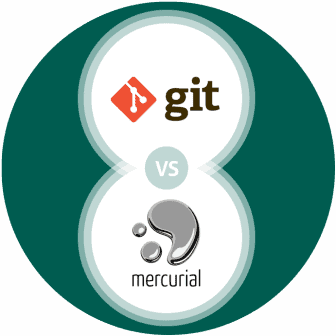In this article, our aim is to describe the differences and similarities between GIT and Mercurial. Both are used as version control systems(VCS) and designed to replace Bitkeeper(commercial VCS). Initially, the BitKeeper gave free licenses to the developers of Linux kernel. After that, it changed into the fickle way which is now called Mercurial.
Earlier stages of GIT and Mercurial
Initially, Linus Torvalds promoted the GIT and it has grown as the popular version control system. In the year 2008, the open source community discovered GitHub and Bitbucket. There are many similarities between GitHub and GIT, but Bitbucket is quite different from Git. This hidden view of Bitbucket is that is launched with Mercurial. Years later Atlassian overtook the Bitbucket and gave assistance to Git repos. In fact, GitHub was well-grown at that time and was known as home for the open source.
When compared to others the GitHub popularity was increased day by day and finally, being supported by many millions of people Microsoft owned the Git. At present Git become the standard VCS for many development projects and it has nearly 32 million users. On the other hand, Mercurial has large developments like Mozilla, World Wide Web Consortium, and Facebook. But it has only a 2% share of the entire version control system market whereas Git has almost 80% share.

Similarities between GIT and Mercurial
Both belong to distributed version control systems(DVCS) (which means allowing all the developers to experiment freely and work independently). It also allows repurchase agreement with full of code and performs their work. It shows the symbolism of work in offline. After the developer’s work, it merges all the works of developers in the “dev code line.” After the testing was done it goes into the department of production. Finally, both the Git and Mercurial helps in managing the source code version history. The differences between both have occurred at expertise, usability and security.
How Mercurial is simpler?
The prominent difference between Git and Mercurial is the expertise level. While handling the Git we have to know about it both inside and out to use effectively and safely. Sometimes with the sloppy developer, it may cause severe damage for the entire team in Git training. It leads to the misunderstandings of the document. Whereas the Mercurial’s syntax is very easy and the documentation also very simpler. After the completion of leaving the curve, Git provides more flexibility.
Main differences between Git and Mercurial Security
Both Git and Mercurial seem to be more secure than the other, but both of them didn’t offer the security that most teams need. For both Git and Mercurial, the security is varied in the technical expertise level. Mercurial is guarded with the less experienced users, but the Git is quite different. Changing of history is cannot be possible with the Mercurial, but the Git can change the history version by involving developers. It can also store within a period of 30 days in reflog for every change. We have a hosting service called Bitbucket in which it has certain exclusive apps like Hipchat, Bamboo and Jira.
 The branching models
The branching models
The branching models are used to secure codes, working with the files that the developer wants to make changes. These models also allow working on various versions of the code in the same duration. The developers can incorporate all the changes without destroying the base of the code.
Branching model of Git
Git has an effective branching model and is references to perform certain purposes. It results from them as powerful but, lightweight. Git also allows you to change, delete, and create a branch at any time.
Branching model of Mercurial
The branching model in Mercurial is very cumbersome in nature. The braches are referred to the new set of the repository. The branches of Mercurial are implanted in the commits and stored forever. It represents that the removal of branches cannot be possible because it causes an alteration in history. Finally, Mercurial is added not to push in the wrong way of code. Whenever the code leads into the wrong way you can avoid Mercurial.
How to get the code ready in Git and Mercurial?
Index file (staging area) idea is supported by the Git which is nothing but adding files for the next commit. This can be helpful in choosing the files in the upcoming commit. In the case of Mercurial, there is no staging area or index file. As they are working in the directory the changes are committed. It is the duty of the person to choose which directory working parts such as DirState, Mercurial extension or Mercurial queues.
Conclusion
Basically, both the Mercurial and Git are similar to each other and has excelled as a version control system (VCS). The design criteria are different for both the systems. The industry standard is more for Git and hence the number of developers are closer to it. Whereas Mercurial is very easy to learn and use. It is very much useful for technical content contributors. Git is the choice for mobile application and web development. But, Helix4Git or Helix Core is chosen if you have large global teams, mixed assets, or security requirements. Helix Core provides a change in the history of digital assets(from to source to binary) and granular permissions. Both are in the way of getting files faster.
Use the JavaScript Cleaner to organize and beautify your scripts before launching websites.
